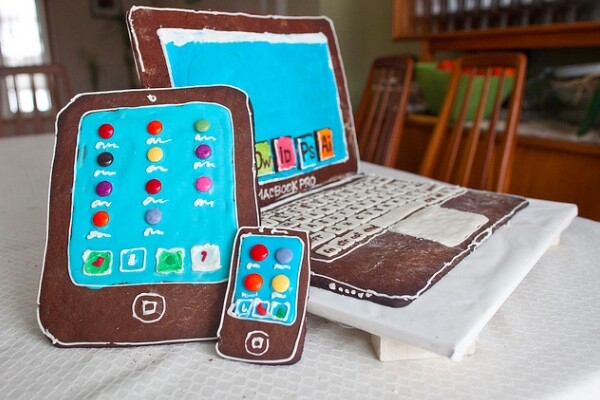Welcome Our New Computer-Chef Overlords

Amidst the crowds at SXSW over the weekend, there sat a food truck. In and of itself, this news isn't all that unique, seeing as people got to eat, and people love eating at food trucks. But this wasn't just some ordinary food truck. This one was special.
Not only was it put together by IBM, it was also fitted with Watson, their artificially intelligent supercomputer. And it may have given us a glimpse into the future of food technology.
You may remember Watson from 2011, when it blasted onto the scene with a full-on media blitz, culminating in a showcase of its talent when it played "Jeopardy" against Ken Jennings, the all-time human champ. It won. Of course. But apparently trivia isn't the only thing that Watson excels at. To show off another aspect of its computing system (which IBM has dubbed Cognitive Cooking), the company stuck Watson in a food truck and had people line up to answer a quick questionnaire about their food preferences. Things like "What type of dish would you like?" and "what kind of ingredients do you want?" and even "what ethnicity cuisine?"
And then the supercomputer processed the information and spit out a personalized recipe for each:
"We ask you for a few inputs and recommendations, and then we start the creative process," [Florian Pinel, senior software engineer in the Watson group] says. "There will be trillions of combinations, and we can narrow them down to a few hundred dishes to look at."
This being the world of technology, don't expect this concept to simply die at the end of the festival after a few hundred people get personalized meals. This may be the future of dining: Enter some information, get your "ideal" food spit out in seconds. But is this a good thing or a bad thing? I'm completely ambivalent. So, let's play a little On the One Hand/On the Other!
On the One Hand
On the one hand, people are literally getting what they want. They're putting in the various parameters for their specific meal, and walking away with just that. So, that's good.
The problem will also come in handy during those times when you know you have a hankering for something, but can't quite put your finger on it. (Say, when you want something like "Mexican, but not too cheesy," but your mind is a blank beyond that.) Having a supercomputer gather up your preferences and give you the most educated guess around can only help those of us afflicted with mental cramping from being forced to make too many food-based decisions.
So, if -- and this is a big qualifier -- if it's used together with the standard methods already in place when deciding what to eat, this kind of program will be a godsend.
On the Other
On the other hand, the odds of this only being used occasionally if it's readily available to all is wishful thinking. If the program somehow gets shrunk enough to fit on a smartphone, this may be the main thing people consult for meals. And that's where things get scary.
Some of my best dining experiences have been when I've completely taken myself out of the decision-making process and simply let a chef, a restaurant special, or the person I'm with decide what I should have. It's a gamble, sure. But it's a gamble that occasionally pays off by gaining the knowledge you actually enjoy a food you never knew you did. The computer system only goes off what the user knows, and finds a match from that. If, for instance, the user's never had Indian food, they're not going to input curries into the system, something they may actually enjoy without even knowing it. Without these forays into the unknown, eating becomes an echo chamber of sorts.
Which is to say: This thing, when it ultimately ends up finding its way to everyone's homes and phones, is going to be awesome. But if it changes the way we're occasionally accidentally introduced to foods, it might end up changing the way we eat for the worse.


